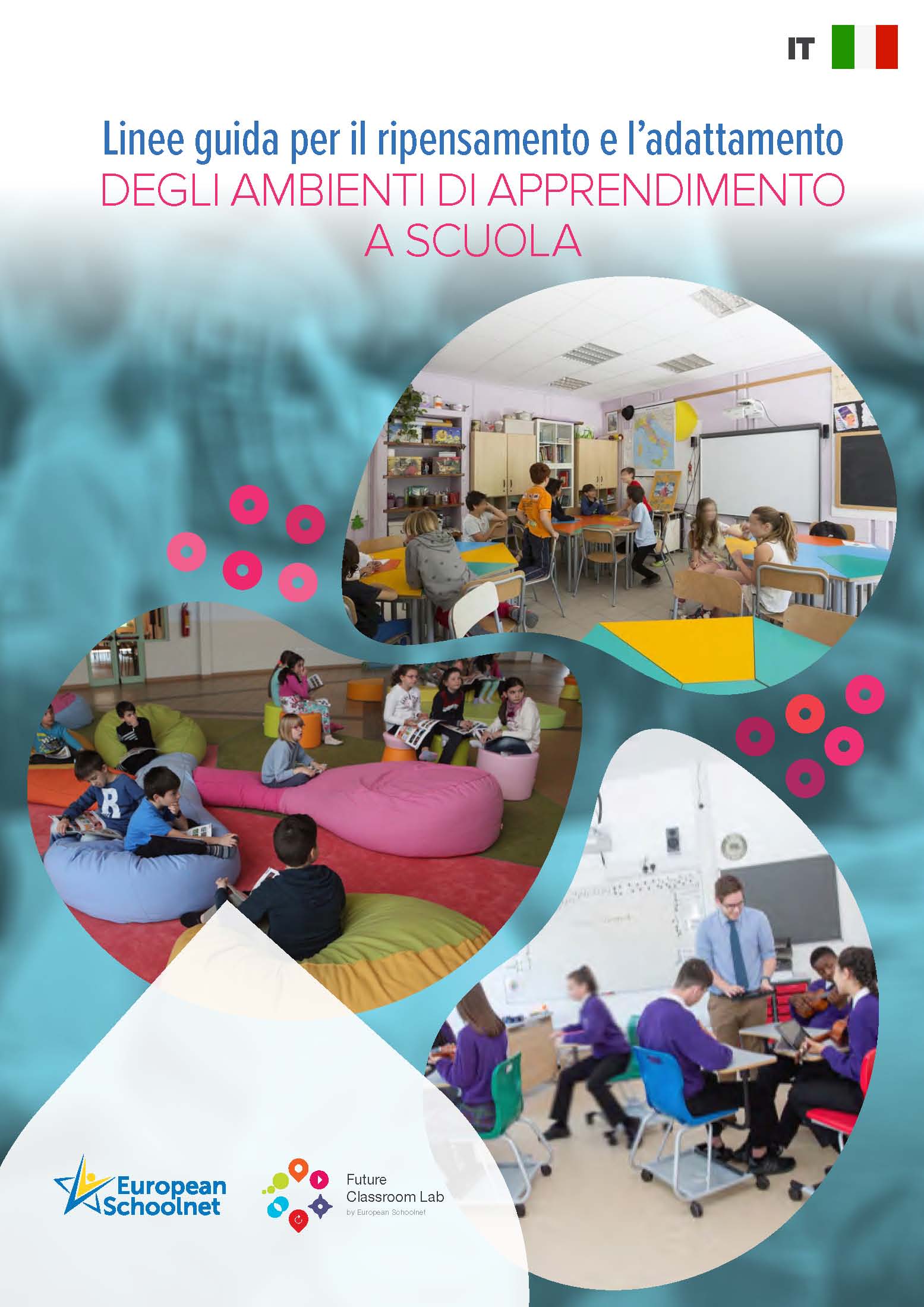Today, it is no longer possible to think about school innovation without rethinking the learning environments. The “Guidelines for rethinking and adapting learning environments at school” have been drawn up with the contribution from the Ministries of Education forming part of the Interactive Classroom Working Group (ICWG) of the European Schoolnet (EUN).
The text has been prepared with the participation of politicians, consultants, headteachers and teachers from eight countries: Austria, the Czech Republic, Estonia, Ireland, Italy, Norway, Portugal and Switzerland. Indire actively contributed by submitting its research at ICWG meetings and specifically through the researchers Leonardo Tosi and Samuele Borri.
The document provides an interpretation of and a vision for schools that have developed the idea of “space” as a fundamental element of innovation together with new technologies for teaching.
A school can be built from scratch, or it can be adapted by changing the original concepts on the basis of which it was built. So, what kind of practical interventions can schools take to make modern education more effective, in line with our time? There is a part in the introduction that clarifies the spirit of the proposal: “There is no single solution: what works in one place may not work in another. The aim of this document […] is to inspire headteachers and teachers, to help them rethink their current teaching practices in the classroom and to show them how even quite small changes in existing classrooms and other school spaces can have a significant impact on teaching and learning”.
How these new guidelines develop remains to be seen. Section 2 of the document presents a research survey in which the pedagogical implications are addressed, starting with an analysis into the definition of a “learning space” and a review of the research results, from which comes confirmation of the indispensable role of space in favour of active learning for the school that wants to take itself into the future. In the third section, a summary explains how space can create benefits for both teachers and students. In section 4, the European Schoolnet’s Future Classroom Lab is discussed in the light of the so-called learning zones (i.e. zones to research, create, present, interact, develop). In this section, a significant part is devoted to future guidelines, including in terms of investments by the European Commission, relating to the experience of the Future Classroom Lab and the projects related to iTec. With the fifth section, we see what the indications are for configuring a Future Classroom Lab. In section 6, teachers are provided with some useful tools that can be used to develop the appropriate verification steps, with a reasoned approach that leads teachers to reflect carefully, before starting work to modify the school spaces in which they work. The document concludes with a national and European overview that describes, through some case studies, the state of the art of technological innovation, the interventions carried out and those soon to be implemented.
Guidelines for rethinking and adapting learning environments at school (PDF) >>>
Guidelines published for rethinking and adapting learning environments at school, the design activity for which was assisted by Indire research
Type: Regulation
Regulations and guidelines

